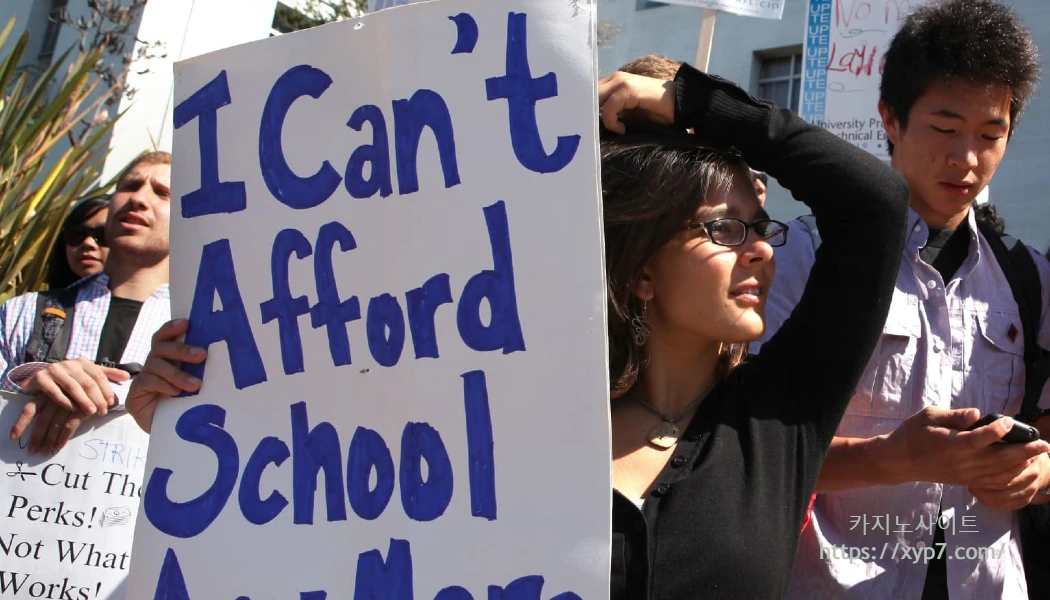
9 Suggestions for Quickly Paying Student Loans
Many of today’s grads are stuck paying down student loans while attempting to save for a house, pay their bills, and start a family, despite the opinion of some experts that you can’t put a price on a decent education. Although 10 years is the normal repayment period for federal loans, other alternatives allow for repayment to be spread out over 30 years.
If you’re feeling overwhelmed, try these ways to pay off your student loans faster.
Mention other fees
If you can afford it, pay more to lower the principal faster and shorten the overall repayment period. By reducing the principal balance, you shorten the loan term and interest rate. For example, a $25,000 student loan with an interest rate of 6.8% and a repayment period of 10 years would cost $288 per month. Using the student loan calculator, you’ll see that paying $400 a month instead of $288 allows the lender to pay off the loan in less than seven years. Another option is to pay bi-weekly instead of monthly.
“Be sure to advise your loan officer to add more of your debt to your principal balance, rather than putting your account in ‘paid off’ status,” says Jessica Ferastoaru, a student loan advisor at Take Charge America. ‘. “This will allow you to pay off the principal balance faster and save money on interest.”
If you have multiple loans, there are many options for choosing which one to pay more. To save the best amount of money, it is best to start with the loan with the highest interest rate. 2. Set up automatic payments
It can be tempting to put the money you have left at the end of the month toward your student loans. But if your budget is tight and you don’t have money at the end of the month, it could mean a reduction in your payment rate.
If you don’t know how much you will spend on your student loans each month, carefully review your budget to determine how much you can afford. Then, set up automatic payments for the beginning of the month. This way, you won’t spend the money accidentally. Be careful when setting up your down payment to avoid overstretching your budget.
Part-time College Job
Getting a part-time job while you attend college is one way to manage college debt because you can use the money to reduce your initial loan amount and make your repayment plan easier. You can earn up to $7,040 a year without affecting your eligibility for need-based financial assistance. Check with your school resource or workplace to see if they are hiring for school work. Campus activities are best suited to a special or active classroom schedule. Online jobs are more plentiful than ever, giving you even more opportunities to fit your schedule and skills. Between school years, you can work summer jobs to earn even more.
Stick to a Budget
Planning and understanding your monthly budget can help you figure out where you can cut back and move those savings on your student loans. “If you’re trying to pay off your student loans quickly, one of the best ways to reach your goal is to budget,” says Ferastoaru. “If you can meet your monthly savings goals and budget, you can use that money to pay off your student loans.”
Review your budgeting process and your ability to stick to a budget. If you’re struggling to stick to a budget, use the student budget calculator to help you get on track and stay there.
Consider Refinancing
Refinancing your student loans can help you pay off your student loans faster by helping you get a lower interest rate, a shorter repayment period, or both.
Note that this option may not be available immediately after graduation unless you have built a strong credit report or have a co-signer. Otherwise, it may take time to establish your credit history and meet the eligibility criteria for lending to lenders. Most lenders also require a stable credit or credit history to qualify. If you refinance federal student loans, you will lose access to certain benefits, including student forgiveness programs and permanent repayment plans.
Before you refinance, shop around with a few lenders to see which one offers you the best rate. You can also use the student loan repayment calculator to figure out the number and know if it is the right decision.
Ask for Loan Forgiveness
Forgiveness programs can eliminate some or all of your student loan debt, but each program has unique requirements and strict eligibility criteria.
Biden Waiver Plan: In August, President Biden announced a plan to waive up to $20,000 in federal loans for borrowers. The exemption is only available to those with an income of $125,000 or less (or $250,000 if you are married and filing a tax return). You can get more information about the program from the Federal Student Aid website and sign up for email updates to know when the application is ready.
Public Loan Exemption: To qualify for the PSLF program, you must be employed full-time by a government or nonprofit organization and make 120 qualifying payments under a loan-based repayment plan. Getting approved for the program is difficult, so read the details carefully to stay on track.
Teacher’s Forgiveness: To qualify for the Teacher’s Forgiveness Program, you must have qualified loans under the Accounts Payable Loan Program or the FFEL program and have taught full-time for five consecutive years at a school or is a country. At least one of these years must be the 1997-1998 academic year. This program waives up to $5,000 or $17,500, depending on your specialty.
Progressive Loan Repayment: It is possible to have a portion of your student loans forgiven if you follow a progressive repayment plan. Once the 20- or 25-year repayment period ends on these programs, any remaining balance is forfeited. If you reach the end of your refund period before 2026, the refund is tax-free.
Reduce Your Interest Rates and Discounts
Most lenders will offer a 0.25% discount if you set up automatic payments on your loan, some may even go over 0.50% with a relationship discount. In addition, private lenders can offer lower interest rates if you meet certain criteria, such as paying certain bills on time or taking out another loan from the same company. If you have private student loans, contact your lender and ask about reduced interest rates and discounts.
Take Advantage of Tax Cuts
The federal government provides a student interest deduction on your taxes for interest paid during the year on qualified loans. The law allows you to deduct up to $2,500, depending on how much you earn. This exemption is available for both federal and private student loans. You can deduct this tax if you are legally required to pay interest on an eligible student loan in your filing status as a single person and filing separately. This program has also fixed a large amount of money, which is kept every year. You don’t need to spend anything to take advantage of this deduction.
It may also be a good idea to take some or all of your tax refund each year and allocate it to your student loans. Ferastoaru says, “It’s a good idea to talk to a tax advisor to make sure you’re taking advantage of all the important tax benefits associated with your education.”
Ask Your Employer About Payroll Assistance
Many employers have begun offering student financial aid or tuition assistance. Some employers, including Starbucks and Walmart, offer free courses to employees who enroll in college programs within their network of select schools. Employers can contribute up to $5,250 per year towards an employee’s teacher or student loan repayment assistance by 2025. This benefit is not taxable income for the employee, which is a major boon for employees pursuing education higher while continuing to work. Employers can also deduct expenses, so everyone benefits. Consult your employee handbook or speak with your human resources department to see what tuition assistance or loan repayment options are available at your company.
Read: It’s Past Time to Pay Back That Family Loan
How Long Does It Take to Pay Off Student Loans?
It usually takes about 10 to 30 years to pay off a student loan, depending on your interest rate, balance, annual income and repayment plan. The repayment plan you choose greatly affects how long it will take you to pay off student loan debt. Although the standard repayment period for student loans is 10 years, you can also opt for extended repayment plans and graduate for federal loans that last 25 to 30 years. Repayment plans allow you to pay 10-20% of your income for 20-25 years. Then you will be forgiven the remaining balance. If you have private student loans, you can choose the repayment schedule that suits you, from five years to 20 years. If you need more time, you can refinance your personal loan.
Does It Make Sense to Pay Off Student Loans Early?
Whether you want to repay your student loans depends on your situation. If you can afford to pay more than the minimum wage without hitting other financial goals, you probably should.
Since student loans come with low interest rates and monthly payments, you may not be in a hurry to repay them. If you have other interest-bearing debt such as credit cards or personal loans, focus on the former.
Whatever you decide, knowing what you can get and what you can give up is very important. Here are some pros and cons of paying off your student loans.


https://ramenskoebeton.ru/beton-m400-ramenskoe.html
бетон раменское